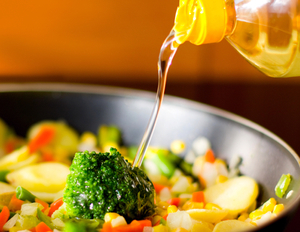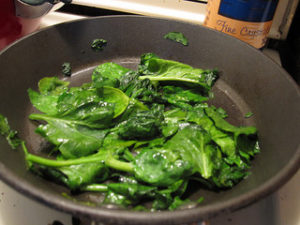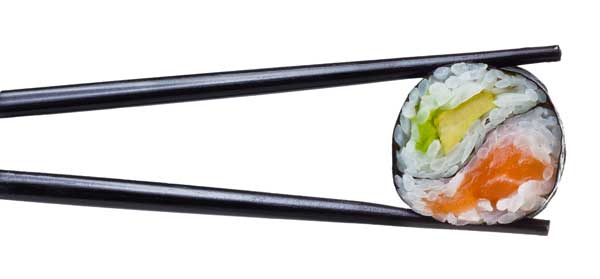How Much Fat is in Restaurant Food?

 You’re in a restaurant and your eyes automatically skim the menu for grilled items – assuming they are low in fat. You dutifully avoid the creamed spinach and choose the sauteed instead. Or perhaps you are in Whole Foods or Trader Joe’s to pick up “healthy prepared foods” for dinner. While they aren’t fried or contain sauce, they do appear to glisten somewhat. Why? These foods contain “hidden”fats to make them taste good! If you frequently eat out or get prepared food for dinner, these hidden fats could be impacting your waistline. The question is – how much fat do they contain?
You’re in a restaurant and your eyes automatically skim the menu for grilled items – assuming they are low in fat. You dutifully avoid the creamed spinach and choose the sauteed instead. Or perhaps you are in Whole Foods or Trader Joe’s to pick up “healthy prepared foods” for dinner. While they aren’t fried or contain sauce, they do appear to glisten somewhat. Why? These foods contain “hidden”fats to make them taste good! If you frequently eat out or get prepared food for dinner, these hidden fats could be impacting your waistline. The question is – how much fat do they contain?
Hidden fats
First, congrats on making healthier choices! But here’s the problem – fat makes food taste good. And chefs want you to like the food so you’ll come back for more. This likely means there is more fat in the food than you think! And yes, while a grilled item is a much better choice than an entree with a sauce, such as chicken marsala or shrimp scampi, you can’t assume there is minimal added fat to your “plain” grilled or broiled entree. This is a concern for people who frequently eat out or pick up prepared foods, especially if you are watching your weight.
How much fat?
Most chefs will brush the meat/poultry/fish with oil or butter prior to grilling or after cooking. And of course, most veggies are sauteed in butter or olive oil. Some veggies absorb more fat than others. Have you ever cooked eggplant? So the question remains – how much fat is added to grilled, baked, sautéed or broiled items? The amount of fat added will depend upon the chef, but here are some estimations:
Tips for estimating fat used in restaurant cooking:
– ½ tsp of fat per ounce of cooked meat/poultry/fish for pan fried without breading, grilled/broiled with fat in marinade or brushed with fat, fat added to dress meats before serving, or roasted or baked meats/poultry fish. *For example: a 7 ounce piece of broiled fish could contain up to an  additional 3.5 tsp of added fat (157 calories and 17 gm fat in addition to the calories/fat in the fish ). This sounds like a lot – not all chefs will add this much – but some will!
additional 3.5 tsp of added fat (157 calories and 17 gm fat in addition to the calories/fat in the fish ). This sounds like a lot – not all chefs will add this much – but some will!
– 1 tsp of fat per ounce of cooked meat/poultry/fish that is deep fried with breading or batter. *For example: a 5 ounce portion of fried calamari (~ 1/2 an appetizer size portion) could contain an additional 5 tsp. of added fat (225 calories and 45 grams of fat in addition to the calories/fat in the protein).
– 1 tsp of fat per cup of vegetables that are steamed/boiled/microwaved with fat or fatty meat added to flavor, and vegetables sautéed with limited fat * For example: an order of sautéed spinach (2 cups) could contain an additional 2 tsp of added fat ( 90 calories and 10 grams of fat) in addition to the calories/fat in the spinach (which isn’t much!)
– 2 tsp of fat per cup of vegetables sautéed with generous fat, steamed/boiled/microwaved with generous fat added *For example: some restaurants served grilled or sautéed veggies that are quite oily. This would contribute an additional 4 tsp. fat (180 calories and 20 grams of fat) for a 2 cup portion.
– 1 Tbsp of fat per cup of vegetables that are deep fried with breading or batter. No shocker here! We know anything deep fried is loaded with calories and fat.
These guidelines are from the Nutrition Data System for Research. Of course, they are only guidelines. The actual amount of fat added to the food will depend upon the chef!
Tips to cut down on fat in restaurants/prepared food
1. Ask for steamed veggies. Squeeze a little lemon on them. Even though they may not be listed on the menu, some restaurants will do steam them for you.
2. Grilled asparagus tends to absorb less oil than sauteed spinach.
3. Ask the waiter to have your food prepared with less oil.
4. If you frequently pick up prepared foods, pick up a head of broccoli or whatever veggies are in season. You can steam them or cook in a nonstick skillet with small amount of olive oil . This way you can control the fat intake. You can even cook frozen veggies!
5. And the most obvious answer – cook more at home!
RELATED POSTS
Sorry, we couldn't find any posts. Please try a different search.
MEET MARTHA
I especially love problem-solving, whether it’s helping women defeat issues plaguing them for years, helping a busy executive find practical ways to get heart healthy, or providing tips to help you reverse diabetes. That’s why I’m on a constant quest to expand my knowledge by staying on top of the latest research.

20 Ways To Eat Out 550 Calories or Less!
No time to cook? We’ve got you covered. Here are 20 healthy meals from a variety of cuisines that won’t pack on the pounds. Most of them also have less than 30 grams of carbs.
Subscribe to my newsletter and get this free download.

